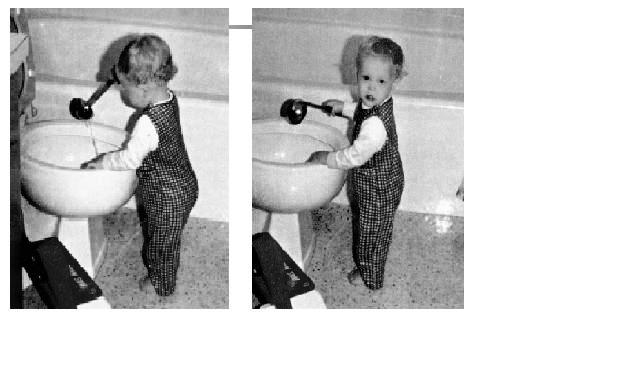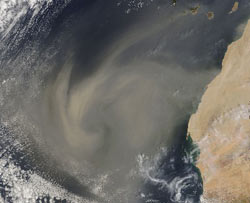Eliminating Pests Without Poisons
Thursday, February 12th, 2009About the author: Lina Younes has been working for EPA since 2002 and chairs EPA’s Multilingual Communications Task Force. Prior to joining EPA, she was the Washington bureau chief for two Puerto Rican newspapers and she has worked for several government agencies.
As I was getting ready to go to work, I was listening to the gardening segment
on the local news radio station. The announcer was giving advice on how to eliminate those unwanted critters that might invade the home to escape from the winter cold without having to use toxic substances. He recommended using mouse traps, for example, instead of fumigating or using rat poison.
As I listened to his useful tips, I realized that he was basically advocating for Integrated Pest Management,
a practice that here at EPA we highly recommend,
Without having to use toxic chemicals, you can prevent pests from seeking refuge in your home if you create an environment that is not pleasing to them. How, you may ask? Well, basically, be a very inhospitable host. What do I mean by that? Well, don’t give them any food to eat, nothing to drink, and no shelter! I know we wouldn’t welcome these pests knowingly, but frankly, when we leave dirty dishes in the sink overnight, or leave water for our pets overnight, or even let water accumulate under our plant pots or around the home, or we have a cluttered home, we are extending an open invitation to the unwanted critters!!! Why do I mention clutter like newspapers, bags, boxes, etc., because you don’t want to create the perfect hiding place for them nor their relatives….
So, even if you follow these steps and you get a visit from an unwanted guest like these pests, consider using baits and traps so you can keep toxics out of your home. Keep a healthy home for you, your family, as well as your pets.


 Each week we write about the science behind environmental protection.
Each week we write about the science behind environmental protection.  In 1987, I was fortunate for two reasons – I received a promotion to manage a group of scientists who evaluated occupational and residential exposure to pesticides, and I became a father for the first time. Watching my young daughter crawl around on the grass and picking up a small pebble to explore with her mouth made me wonder about possible exposure of young children to pesticides used on lawns – at the same time, I realized that our group of scientists had very little data to answer the question. Thus, I began on a 20-year journey to promote research related to better understanding children’s environmental exposure.
In 1987, I was fortunate for two reasons – I received a promotion to manage a group of scientists who evaluated occupational and residential exposure to pesticides, and I became a father for the first time. Watching my young daughter crawl around on the grass and picking up a small pebble to explore with her mouth made me wonder about possible exposure of young children to pesticides used on lawns – at the same time, I realized that our group of scientists had very little data to answer the question. Thus, I began on a 20-year journey to promote research related to better understanding children’s environmental exposure. Take some time and watch a toddler very carefully and you will begin to understand just how unique children’s behaviors can be compared to adults – here is a great example:
Take some time and watch a toddler very carefully and you will begin to understand just how unique children’s behaviors can be compared to adults – here is a great example: My name is Ashley, and this semester I have the privilege to work at the EPA Office of Children’s Health Protection and Environmental Education. I am so excited to spend the next couple of months writing blog entries in order to give middle and high school students a voice to express their own thoughts and feelings on issues like global climate change. Let me start off by mentioning a few things about myself.
My name is Ashley, and this semester I have the privilege to work at the EPA Office of Children’s Health Protection and Environmental Education. I am so excited to spend the next couple of months writing blog entries in order to give middle and high school students a voice to express their own thoughts and feelings on issues like global climate change. Let me start off by mentioning a few things about myself. Every summer, particles of dust from the Sahara Desert travel halfway around the globe and settle in the Caribbean area around Puerto Rico. This dust impacts not only our air quality, but the climate. This cloud, full of minerals and fungi, alters the quality of air and impacts not only respiratory health, but ecosystems as well. Some studies trace the loss of coral reefs in the Caribbean to this phenomenon. It’s incredible that these small particles from the Sahara Desert in Africa can cause so many adverse impacts to the environment and health an ocean away.
Every summer, particles of dust from the Sahara Desert travel halfway around the globe and settle in the Caribbean area around Puerto Rico. This dust impacts not only our air quality, but the climate. This cloud, full of minerals and fungi, alters the quality of air and impacts not only respiratory health, but ecosystems as well. Some studies trace the loss of coral reefs in the Caribbean to this phenomenon. It’s incredible that these small particles from the Sahara Desert in Africa can cause so many adverse impacts to the environment and health an ocean away. Todos los veranos las partículas de polvo del Desierto del Sahara viajan alrededor del mundo y se asientan en el área del Caribe, especialmente en Puerto Rico. Este polvo no solo afecta nuestra calidad de aire, pero también el clima. La nube, lleva de minerales y hongos, altera la calidad del aire e impacta severamente a aquellos con condiciones respiratorias, pero también afecta los ecosistemas. Inclusive algunos estudios asocian la pérdida de corales en el Caribe a este fenómeno. Es increíble que partículas tan pequeñas sean responsables de tanto impactos adversos al medioambiente, las personas y a los ecosistemas que se encuentran a un océano de por medio.
Todos los veranos las partículas de polvo del Desierto del Sahara viajan alrededor del mundo y se asientan en el área del Caribe, especialmente en Puerto Rico. Este polvo no solo afecta nuestra calidad de aire, pero también el clima. La nube, lleva de minerales y hongos, altera la calidad del aire e impacta severamente a aquellos con condiciones respiratorias, pero también afecta los ecosistemas. Inclusive algunos estudios asocian la pérdida de corales en el Caribe a este fenómeno. Es increíble que partículas tan pequeñas sean responsables de tanto impactos adversos al medioambiente, las personas y a los ecosistemas que se encuentran a un océano de por medio.